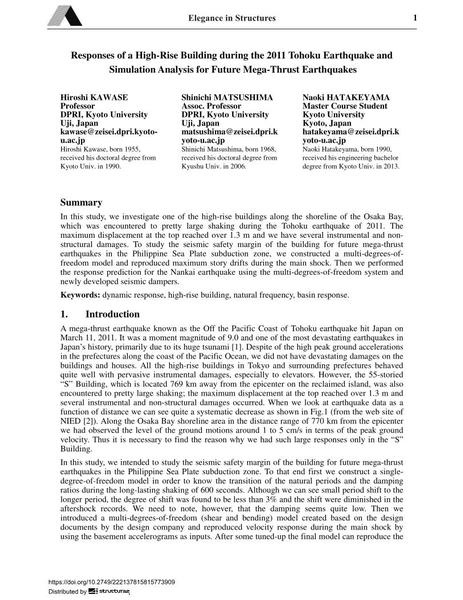Responses of a High-Rise Building during the 2011 Tohoku Earthquake and Simulation Analysis for Future Mega-Thrust Earthquakes

|
|
|||||||||||
Bibliografische Angaben
| Autor(en): |
Hiroshi Kawase
Shinichi Matsushima Naoki Hatakeyama |
||||
|---|---|---|---|---|---|
| Medium: | Tagungsbeitrag | ||||
| Sprache(n): | Englisch | ||||
| Tagung: | IABSE Conference: Elegance in structures, Nara, Japan, 13-15 May 2015 | ||||
| Veröffentlicht in: | IABSE Conference Nara 2015 | ||||
|
|||||
| Seite(n): | 54-55 | ||||
| Anzahl der Seiten (im PDF): | 8 | ||||
| Jahr: | 2015 | ||||
| DOI: | 10.2749/222137815815773909 | ||||
| Abstrakt: |
In this study, we investigate one of the high-rise buildings along the shoreline of the Osaka Bay, which was encountered to pretty large shaking during the Tohoku earthquake of 2011. The maximum displacement at the top reached over 1.3 m and we have several instrumental and non- structural damages. To study the seismic safety margin of the building for future mega-thrust earthquakes in the Philippine Sea Plate subduction zone, we constructed a multi-degrees-of- freedom model and reproduced maximum story drifts during the main shock. Then we performed the response prediction for the Nankai earthquake using the multi-degrees-of-freedom system and newly developed seismic dampers. |
||||
| Stichwörter: |
Hochhaus Eigenfrequenz
|
||||
